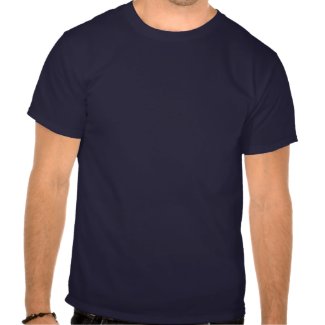This Earth Day tote bag features a Pine Siskin who seems to be talking to a male goldfinch (although he has a sunflower seed in his mouth). His message is: Earth Day - Every Day. The text can be customized or removed.
As with the Polar Bears which prey on them, marine mammals such as the Ringed Seal are threatened by the changes caused by climate change to the Arctic ice pack. Named for the ring-shaped marks on their coats, the Ringed Seal (Phoca hispida) is the most abundant and wide-ranging ice seal in the northern hemisphere: ranging throughout the Arctic Ocean, into the Bering Sea and Okhotsk Sea as far south as the northern coast of Japan in the Pacific, and throughout the North Atlantic coasts of Greenland and Scandinavia as far south as Newfoundland, and include two freshwater subspecies in northern Europe. Ringed seals are one of the primary prey of polar bears and have long been a component of the diet of indigenous people of the Arctic. Marked decreases in Ringed Seal abundance are likely to have cascading effects in Arctic food webs. The Ringed Seal serves an indicator of ecological change in the Arctic, due to its dependence upon annual sea ice. Ringed seals are . They are born from mid-March to mid-April and weaned prior to break-up in June. The distribution of Ringed Seals in the world is shown below : During the lactation period, young seals spend half their time on top of the ice and half underwater, where they are hunted by polar bears. In order to protect themselves from predators and rear their young, ringed seals make snow lairs on the surface of sea ice. Those in the thin snow layers are more susceptible to attack than those in the thick layers. The abundance and the stability of ice is very important for the success of the young seals. If the ice continues to decline due to climate change, young seals will be forced to swim in open water at an early age, causing them to expand more energy and be vulnerable to attack. In addition, the ice is also needed to rest, after the weaning period, which is essential for their development. Sea ice reduction due to climate change can move the ranges of the Ringed seals further north and would affect their feeding seasons, fertility, and survival. Drift ice created by increasing temperatures can also move up the ranges of harp seals and increase hooded seals off West Greenland, affecting the equilibrium already established between the native populations in that area. The decline in the populations of Ringed seals is also affecting the population of their predator – the polar bear. Polar bears prey almost exclusively on ringed seals, and most often kill their pups which depend on sea ice for survival. In addition to polar bears, humans also have been hunting the Ringed seals for centuries. Not only are they a source of food for most coast-dwelling northern people, they are also a source of income. Thousands of Ringed seals are harvested and traded for fur annually by the Inuit and other people of the Arctic Basin. Other Threats Warmer ocean temperatures are also more likely to cause an increase in pathogens that affect the Ringed seals. And a migration of Ringed seals to find more stable habitats can increase the spread of these pathogens, which might even lead to an epidemic of a disease. In addition, as temperatures warm, there will be more human presence in the Arctic region, with shipping, fishing, agriculture, and oil extraction. This will further degrade Ringed seal habitats and reduce the availability of their food, such as fish. In fact, sick and dead ringed seals started showing up in July (2011) on the Beaufort Sea coast near Barrow, the country's northernmost community. Strandings were reported as far west as Point Lay and Wainwright on the Chukchi Sea. The affected animals had lesions on hind flippers and inside their mouths. Some showed patchy hair loss and skin irritation around the nose and eyes. Stricken live seals were lethargic, allowing people to approach. Necropsies on the dead ringed seals found fluid in lungs, white spots on livers and abnormal growth in brains. Symptoms, but no deaths, were also observed in Pacific walrus. At first it was thought that radiation released from the Fukushima nuuclear reactors in Japan might be the cause. That has been shown not to be the case. Immune system diseases, fungi, man-made and bio-toxins, contaminants and stressors related to sea ice change may be the cause. Research has combined scientific observations with Canadian Inuit traditional knowledge to how killer whales (Orcinus orca) in the Arctic eat and behave. An increase in hunting territories available to killer whales in the Arctic due to climate change and melting sea ice could “seriously affect the marine ecosystem balance.” Killer whales have recently started colonizing Hudson Bay They are top predators that affect the behavior of their prey, causing them to run away, dive deep or try to hide among sea ice. Orcas eat everything from schools of small fish to large baleen whales, over twice their own size. Smaller mammals seek refuge in shallow waters or on shore, and larger prey run away, dive deep, or attempt to hide among the ice. Even narwhal, will run to shallow waters and wait until the whales give up.
Green Planet Live Green Cup/Mug.

Green Leaves by Bebops
Sometimes I think Earth Day is the most important holiday of all. If we don't give our planet the love she deserves, everything else will sooner or later go down the drain. We need daily reminders of the fragile beauty we all depend on. So I decided to run this blog to share Earth Day items I have created in my online store , Bebop's Place, using my original photographs and designs.
I am also constantly amazed at the wonderful products available from the rest of the Zazzle community and plan to showcase some of the best! I am hoping others will see this blog and will be moved to purchase some of these lovely items in support of our fragile planet.


